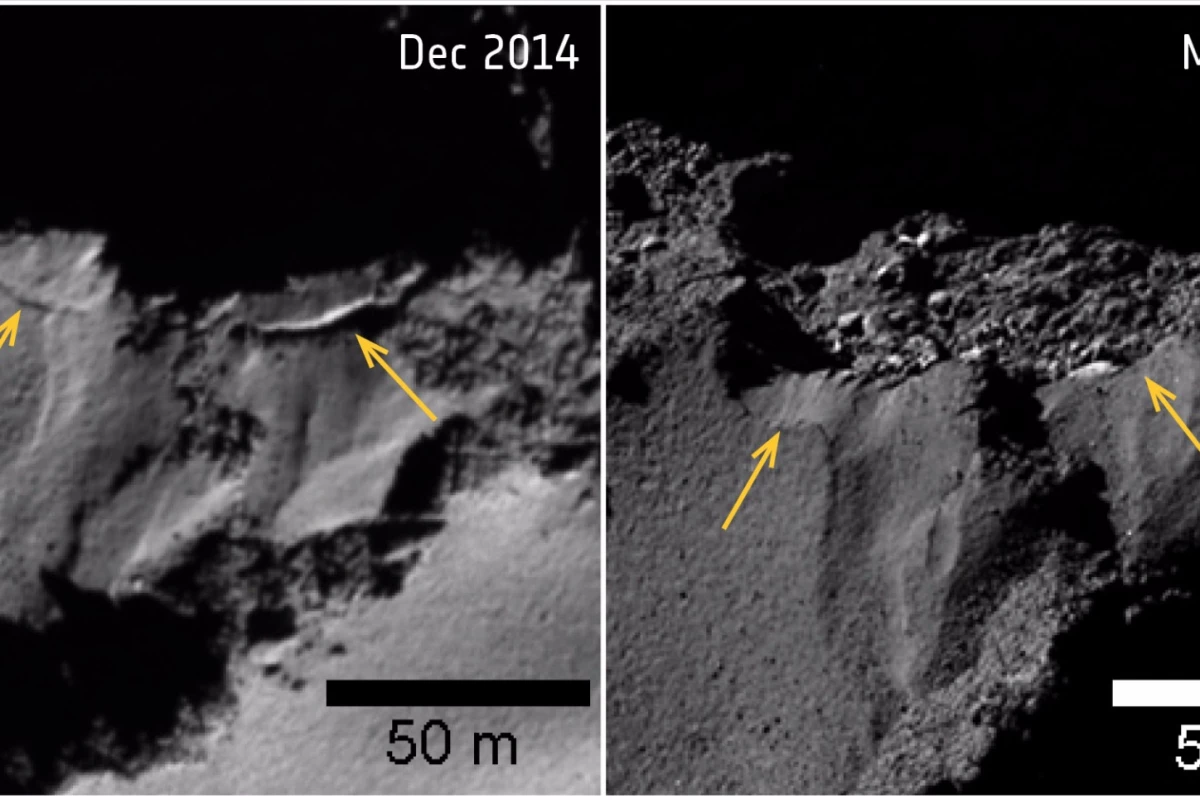The ESA's Rosetta comet orbiter may have been laid to rest, but the information returned by the unmanned deep space probe continues to pay scientific dividends. Images taken by Rosetta's cameras as Comet 67P/Churyumov–Gerasimenko passed closest to the Sun in 2015 show that the surface of the comet underwent dramatic changes as the terrain was resculpted by landslides and avalanches, revealing the pristine interior of the space rock's body.
According to the ESA, Comet 67P was dormant as it orbited in the outer reaches of the solar system, but as it approached the Sun in 2014, it grew warmer and more active as ice beneath the surface sublimated into vapor and gassed out, pulling with it dust and other small particles. Though the exact mechanism is still uncertain, the space agency says that this weakened many structures, which caused sudden outbursts as cliff faces crumbled in the extremely low gravity.
By comparing the first close-up images taken by Rosetta in September 2014 with later ones, scientists were able to record sudden, dramatic shifts in the landscape. For example, when the 134 m (440 ft) high Aswan cliff was observed in 2014, it had a fracture 70 m (230 ft) long and 1 m (3 ft) wide. But in July 2015, during the comet night, the fracture was replaced by a bright, sharp edge and the base was strewn with boulders a meter across.

"The last time we saw the fracture intact was on 4 July, and in the absence of any other outburst events recorded in the following ten-day period, this is the most compelling evidence that we have that the observed outburst was directly linked to the collapse of the cliff," says Maurizio Pajola, the study leader.
According to ESA scientists, as Comet 67P approached its closest point to the sun (perihelion), the interior of the cliff was protected by layers of dust, but as the comet rotated, the cliff face heated and cooled, causing it to expand and contract until the face cracked. The heat seeped into the interior through the cracks, causing the ice to sublimate and widen the fractures. This generated a self-perpetuating cycle, causing sudden outbursts of activity until the cliff face collapsed.
The space agency says that one of the benefits of these sudden outbursts is that they expose pristine deposits of water ice, giving scientists a glimpse at the interior of the comet that would normally be buried tens of meters under the surface. This water is so clean that it reflects light six times more brightly than the dust-covered surface. However, in the case of the Aswan cliff destruction, this surface gradually dulled as the ice sublimated until it was only half as bright by December 26, 2015 and by August 6, 2016 it was indistinguishable from its surroundings.
Also of note, the researchers found that a 30-m-wide (98 ft), 12,800-ton boulder moved 140 m (459 ft) in the Khonsu region of Comet 67P/Churyumov–Gerasimenko in the lead-up to perihelion in August 2015.
The research was published in Science.
Sources: ESA, University of Maryland











